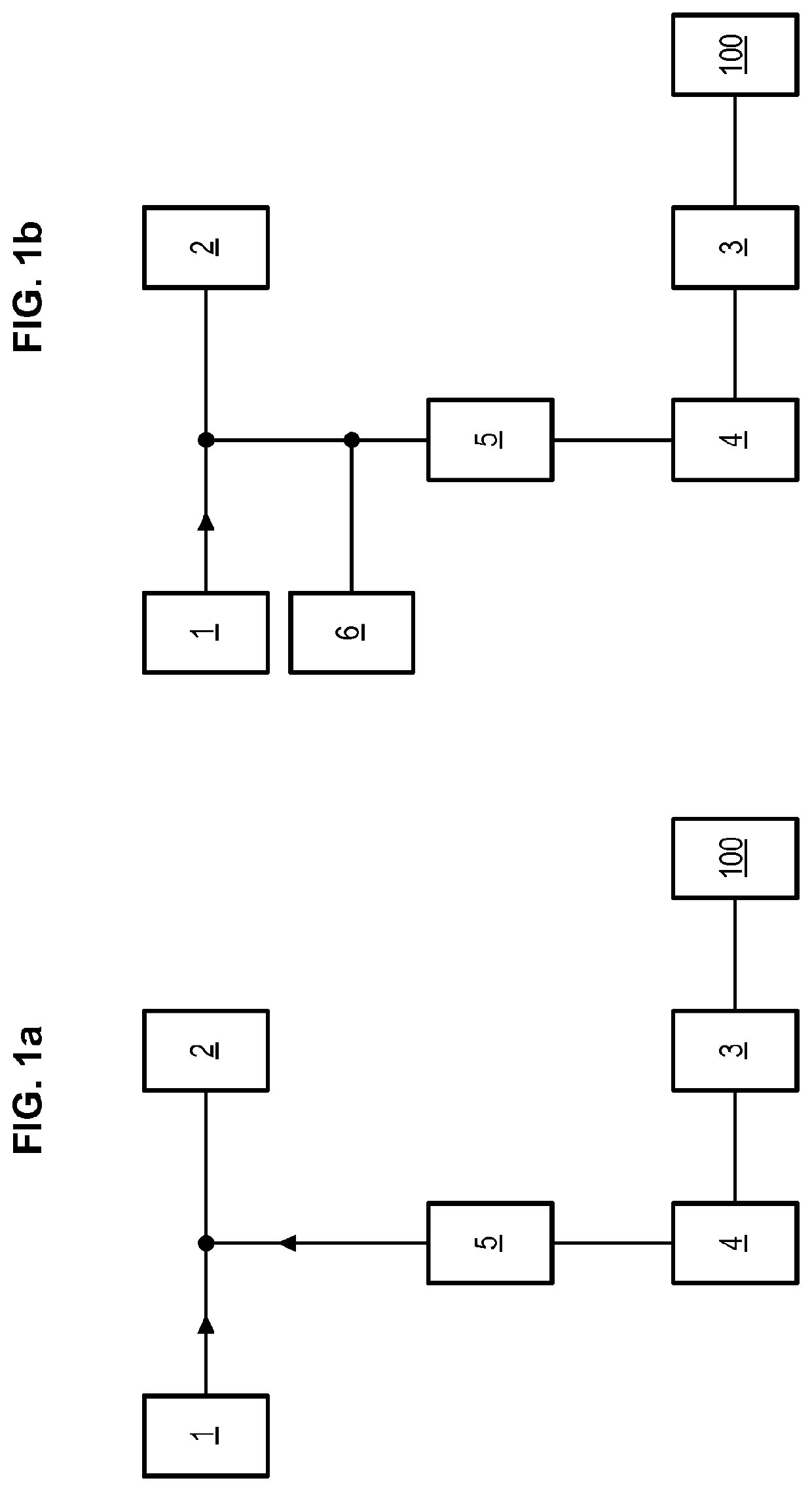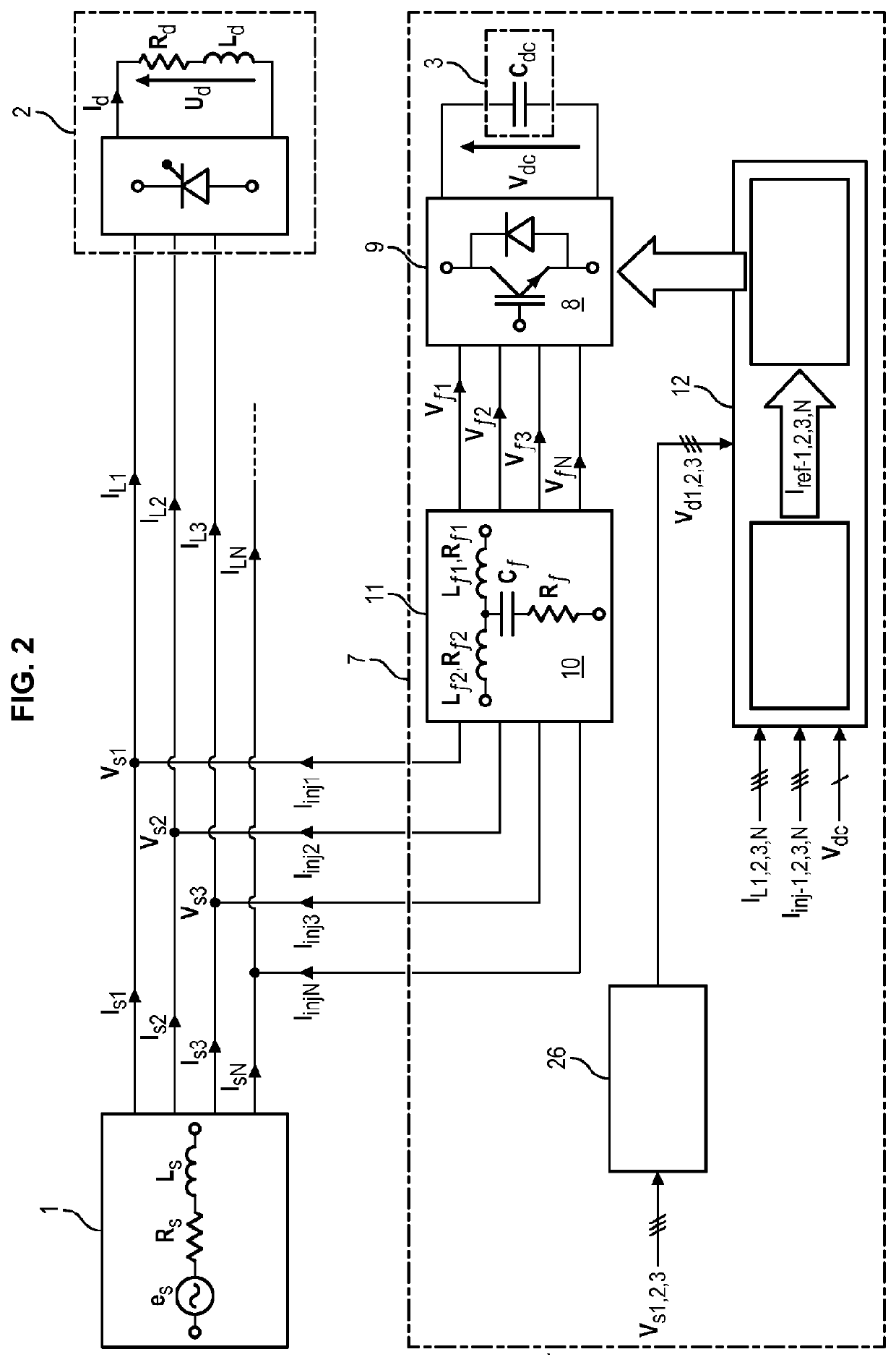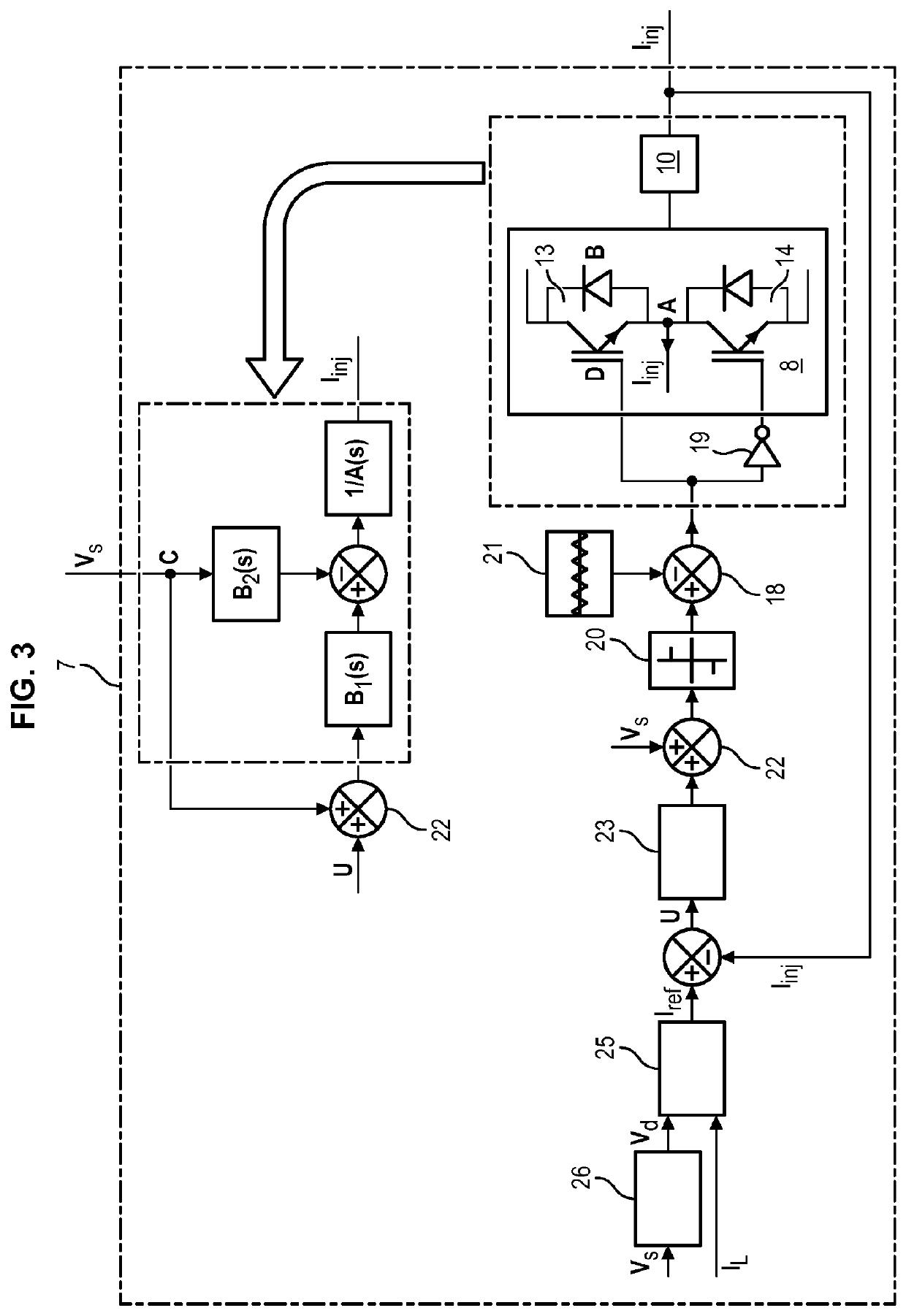Device For Active Electrical Compensation
a technology of active electrical compensation and circuit, which is applied in the integration of ac network to reduce harmonics/ripples, power network operation systems, etc., can solve the problems of undesirable second effects, degrade the quality of signal traveling through the network, and destroy these devices, so as to improve the quality of voltag
- Summary
- Abstract
- Description
- Claims
- Application Information
AI Technical Summary
Benefits of technology
Problems solved by technology
Method used
Image
Examples
Embodiment Construction
[0125]The invention relates to an electrical system as shown in FIGS. 2-3, comprising a power supply network 1 with 3 phases and one neutral, a non-linear or linear load 2 or both connected to the network 1, a capacitive energy storing element 3, a renewable-energy-generating power unit 100 and a compensating assembly 7 connected on the one hand to its input, downstream, to the output of the renewable-energy-generating power unit 100 associated with the storing element 3 and on the other hand shunt-connected across its output, upstream, at a connection point (C) located between the network 1 and the load 2.
[0126]The compensating assembly 7 includes:[0127]a power converting unit 8, including an inverter 9, generating an AC current with a frequency band ranging from 50 to 2500 Hz, covering:
[0128]a) the whole frequency band of the non-active disturbance current which has: all or part of the harmonics, and at the fundamental frequency all or part of the reactive power and / or unbalanced ...
PUM
 Login to View More
Login to View More Abstract
Description
Claims
Application Information
 Login to View More
Login to View More - R&D
- Intellectual Property
- Life Sciences
- Materials
- Tech Scout
- Unparalleled Data Quality
- Higher Quality Content
- 60% Fewer Hallucinations
Browse by: Latest US Patents, China's latest patents, Technical Efficacy Thesaurus, Application Domain, Technology Topic, Popular Technical Reports.
© 2025 PatSnap. All rights reserved.Legal|Privacy policy|Modern Slavery Act Transparency Statement|Sitemap|About US| Contact US: help@patsnap.com



